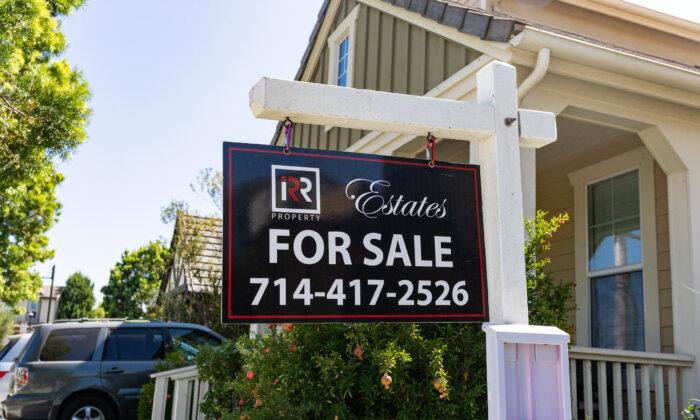Americans expect inflation to worsen in the coming months and have lower expectations regarding personal finances, indicating a dismal national economic outlook.
“Year-ahead inflation expectations rose from 3.2 percent last month to 4.2 percent this month, the highest reading since May 2023,” an Oct. 27 survey report by the University of Michigan states. Coinciding with the surge in inflation, consumer sentiment fell to 6 percent in October after two consecutive months of little change.
“While consumers recognize that inflation has slowed down from its peak last summer, they cannot ignore that their budgets remain stretched and their purchasing power reduced,” chief economist Joanne Hsu, director of the surveys, said in an Oct. 27 statement from the university’s Institute for Social Research.
“Given the high-frequency and widespread nature of food and gas purchases across American families, it is no surprise that concerns over the prices of these goods loom particularly large in the minds of consumers. Even so, strength in incomes continues to support aggregate spending for the time being.”
About 47 percent of consumers reported that high prices—8 percentage points higher than in September—were eroding their living standards.
When talking about inflation, consumers “spontaneously pointed” to the prices of gas and groceries. “Spontaneous mentions of high prices for larger purchases like durables and vehicles have been relatively flat this month,” the Institute for Social Research statement reads.
Regarding personal finances, lower-income consumers saw little change, while middle- and higher-income consumers have seen declines since August, which is partly because of the “recent weakness in stock markets,” according to the statement.
One-year expectations of consumers’ personal finances dropped by 8 percent from last month, while year-ahead expectations of business conditions plunged by 16 percent, the survey report shows.
“The drumbeat of other negative headlines—war in the Middle East, the just-resolved leadership crisis in the House of Representatives, daily developments with Trump’s legal troubles, among others—has produced its own drag [on consumer sentiment],” Ms. Hsu said.
Inflation and Interest Rates
Consumer worries about inflation come as the Federal Reserve has been attempting to bring inflation down by raising interest rates. The action has resulted in the U.S. economy facing an environment of rising prices and elevated interest rates, putting pressure on household budgets and business finances.
However, the Fed’s “Summary of Economic Projections” from September left the door open for one more potential rate hike.
“Inflation continues to be too high, and I expect it will likely be appropriate for the Committee to raise rates further and hold them at a restrictive level for some time to return inflation to our 2 percent goal in a timely way,” she said.
Ms. Bowman warned that there’s a “continued risk that high energy prices could reverse some of the progress we have seen on inflation in recent months.”
Mr. Powell admitted that inflation remains high and that economic growth may need to ease to bring it down to the Fed’s target rate of 2 percent. Annual inflation in September was 3.7 percent.
Struggling Under Inflation
The elevated rate of inflation has made life tough for Americans. A Gallup survey published in May showed that 61 percent of U.S. citizens were facing financial hardship in their households because of elevated prices—the highest since 2021, when Gallup began to track the data.Lower-income Americans faced greater difficulty from inflation than people in the higher income brackets.
An April Gallup poll found that inflation was the top concern for Americans. While 35 percent said that inflation was the biggest issue; 11 percent cited the cost of owning or renting a home; and 9 percent saw “too much debt” as a major problem.
But now, factors such as inflation and high interest rates are working to sap consumers’ propensity to spend, he said. “That sort of pileup wears on the consumer and makes them wary. ... For the first time in a long time, there’s a reason for the consumer to pause.”







